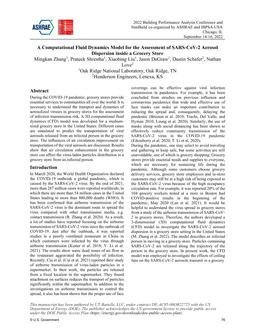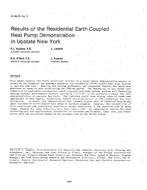An approach is introduced, which enables the assessment of thermal comfort considering the complex and nonuniform climatic conditions in buildings. Computational fluid dynamic is linked with a numerical model representing the thermophysiological behavior of the human body (UC Berkeley Comfort Model). By dint of CFD, the climatic conditions in buildings are simulated with a detailed resolution. The simulations have been validated against measurements in a climate chamber equipped with a thermal manikin. Based on the CFD simulations, the thermophysiological model is finally able to determine the temperature distribution of the human body, the heat flux to the environment as well as thermal comfort. In this paper, this approach is used for the exemplified investigation of thermalcomfort and sensation in a room equipped with a radiant cooling floor.
Citation: IAQ Conference: IAQ 2013: Environmental Health in Low Energy Buildings
Product Details
- Published:
- 2013
- Number of Pages:
- 5
- File Size:
- 1 file , 1.3 MB
- Product Code(s):
- D-2013IAQConf-75


